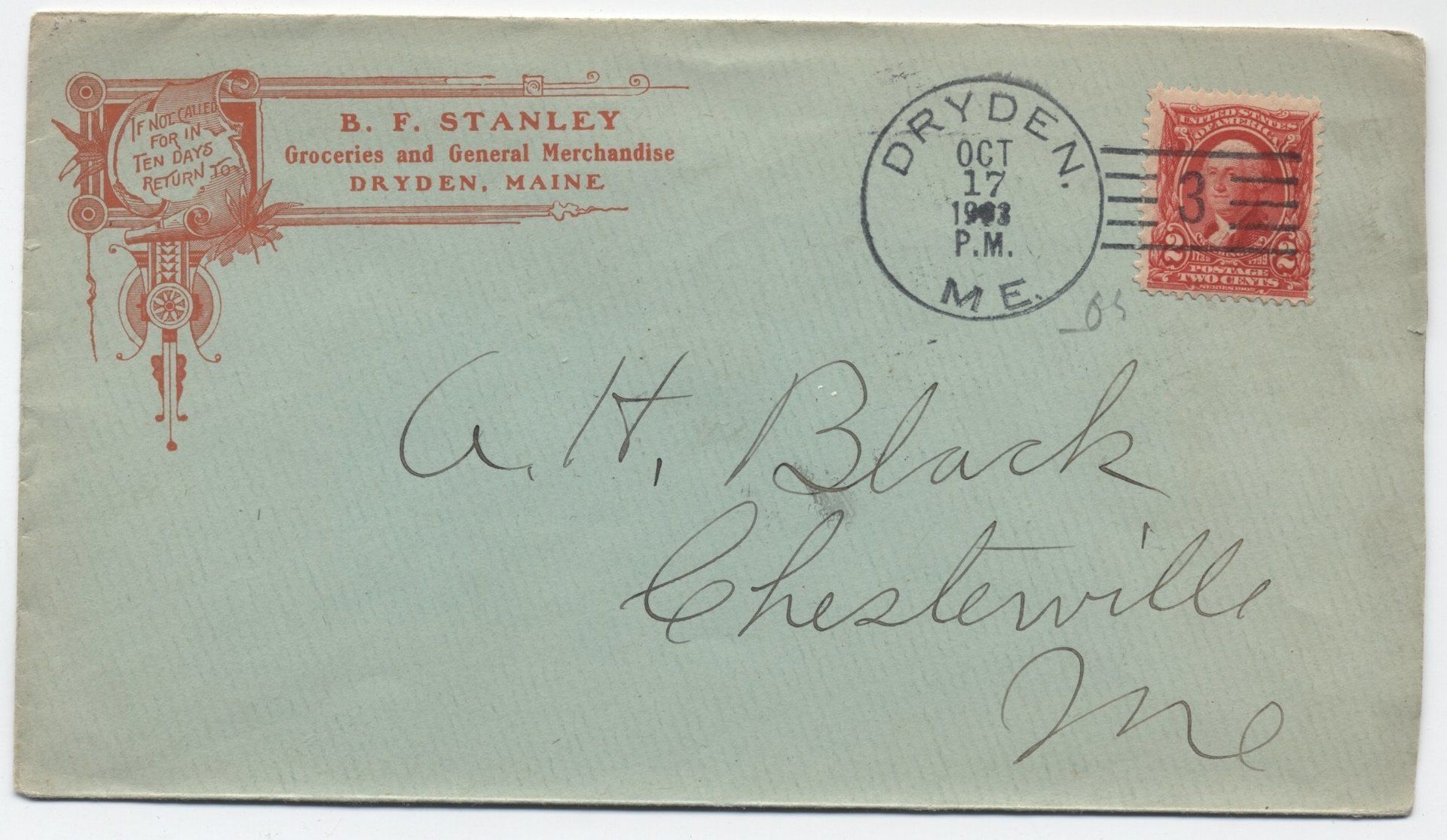On the Use of Postage
- By Matthew Liebson
- •
- 17 Dec, 2017
- •
As a
regular eBay buyer and seller and a recipient of many pieces of
philatelic correspondence, I'm surprised at how little philatelic mail
uses current commemorative stamps. We're all stamp collectors, after
all! Maybe only about half of my incoming philatelic mail these days
bears stamps at all - the rest have labels. Of the stamp-bearing mail,
about half uses discount postage, a quarter uses definitives, and the
rest uses at least something current and commemorative in nature.
I
strongly encourage collectors and dealers to try to use currently
available stamps on mail. Yes, it costs more compared to a label you can print off at home and save a percentage. But why not use a current commemorative when you know you are sending mail to fellow collector? Even if they don't collect modern material, many collectors accumulate stamps from their incoming mail for donation purposes. For example, commemoratives from my incoming mail are donated every year to the youth table at Cleveland's Garfield Perry March Party stamp show.
Discount postage has its place (especially on mail to people who aren't collectors - yet), but if we don't use currently available stamps, who will? Discount postage does offer a significant savings to sellers; I've made my own compromise by using at least one current commemorative or higher-value stamp on every item I mail along with discount postage to make up the correct rate.
Give the current material a try. Your correspondents will appreciate it.

So called "Doane" cancels are an early 20th century experiment to see if government-supplied rubber handstamps would hold up under regular use at small post offices. The experiment worked, and the devices (in three major types) went on to be used in thousands of mostly 4th class post offices around the country.
"Doane" markings are characterized by 4 or 5 killer bars with a numeral in them; they must be rubber handstamps. The name comes from research Edith Doane, who assembled lists of markings and studied their history.
The first 500 markings were distributed in 1903. The type 1 markings, like the example illustrated above, have 5 killer bars. Type 2 has four hollow bars (or paired lines); type 3 has 4 solid bars. A few lasted in service until the 1920s; and some are even seen in the 1930s on philatelic mail. Most were gone by 1915, however, replaced by 4-bar handstamps (without the number in the killer) or by other types of markings.
Doanes were used in all 50 states, as well as in Samoa, the Canal Zone, and perhaps other places. Their heaviest use coincides with the early 20th-century postcard craze, but finding nice examples on cover can present a significant challenge. Because Doanes were used at small post offices, many of those offices are now discontinued.
Doanes are well studied. Richard Helbock and Gary Anderson published a catalog ("United States Doanes") in 2002; it lists periods of use for each reported marking with a scarcity factor. The lists are now updated online - see www.doanecancel.com for the latest information.
New discoveries- not only new EKU/LKU dates but also previously unreported markings - are still readily possible. Go hunting!
"Doane" markings are characterized by 4 or 5 killer bars with a numeral in them; they must be rubber handstamps. The name comes from research Edith Doane, who assembled lists of markings and studied their history.
The first 500 markings were distributed in 1903. The type 1 markings, like the example illustrated above, have 5 killer bars. Type 2 has four hollow bars (or paired lines); type 3 has 4 solid bars. A few lasted in service until the 1920s; and some are even seen in the 1930s on philatelic mail. Most were gone by 1915, however, replaced by 4-bar handstamps (without the number in the killer) or by other types of markings.
Doanes were used in all 50 states, as well as in Samoa, the Canal Zone, and perhaps other places. Their heaviest use coincides with the early 20th-century postcard craze, but finding nice examples on cover can present a significant challenge. Because Doanes were used at small post offices, many of those offices are now discontinued.
Doanes are well studied. Richard Helbock and Gary Anderson published a catalog ("United States Doanes") in 2002; it lists periods of use for each reported marking with a scarcity factor. The lists are now updated online - see www.doanecancel.com for the latest information.
New discoveries- not only new EKU/LKU dates but also previously unreported markings - are still readily possible. Go hunting!

Are you a member of the American Philatelic Society? If the answer is "yes," great! Thanks for your support of philately in the United States. If the answer is "no," what are you waiting for?
In the interest of full disclosure, I'll note up front that I serve as the chair of the APS membership committee. But writing this post has less to do with my position than my belief in the benefits of membership.
I start with the proposition that APS is the national voice of philately in the United States. By supporting the APS, you support stamp collecting: APS not only serves its members, it promotes philately. Second, APS membership has meaning: because of the APS code of ethics to which all members are bound, APS members have credibility in the philatelic community (and in the case of a problem or dispute with an APS member, the APS can help resolve it through disciplinary action).
APS is also a good way to connect with other collectors. With hundreds of local stamp clubs as APS chapters and hundreds of specialty societies as APS affiliates, there are ways to find other collectors in your area or who collect what you do. APS-sponsored shows and events also serve to connect collectors. APS provides ideas, resources, and support to its chapters and affiliates around the country and beyond.
There are many tangible benefits to APS membership as well. Members receive the monthly American Philatelist magazine. Members can buy and sell through sales circuits, where stamps are mailed to you for inspection and purchase, and have discounted pricing for APS online sales (and can sell material online as well). Members have access to the largest philatelic library in the United States, to a useful philatelic insurance program, to the APS expertization service, and many other things. I find that APS membership offers excellent value for the money.
Take a look at www.stamps.org , and consider joining if you haven't already. I'd be happy to serve as a member sponsor for your application.
In the interest of full disclosure, I'll note up front that I serve as the chair of the APS membership committee. But writing this post has less to do with my position than my belief in the benefits of membership.
I start with the proposition that APS is the national voice of philately in the United States. By supporting the APS, you support stamp collecting: APS not only serves its members, it promotes philately. Second, APS membership has meaning: because of the APS code of ethics to which all members are bound, APS members have credibility in the philatelic community (and in the case of a problem or dispute with an APS member, the APS can help resolve it through disciplinary action).
APS is also a good way to connect with other collectors. With hundreds of local stamp clubs as APS chapters and hundreds of specialty societies as APS affiliates, there are ways to find other collectors in your area or who collect what you do. APS-sponsored shows and events also serve to connect collectors. APS provides ideas, resources, and support to its chapters and affiliates around the country and beyond.
There are many tangible benefits to APS membership as well. Members receive the monthly American Philatelist magazine. Members can buy and sell through sales circuits, where stamps are mailed to you for inspection and purchase, and have discounted pricing for APS online sales (and can sell material online as well). Members have access to the largest philatelic library in the United States, to a useful philatelic insurance program, to the APS expertization service, and many other things. I find that APS membership offers excellent value for the money.
Take a look at www.stamps.org , and consider joining if you haven't already. I'd be happy to serve as a member sponsor for your application.


